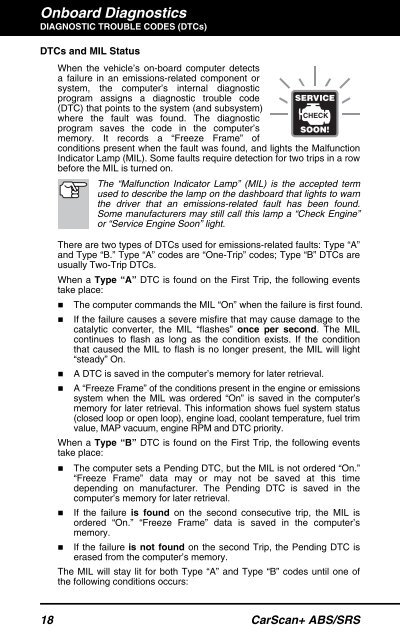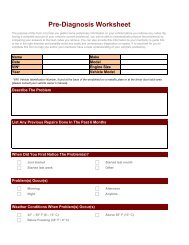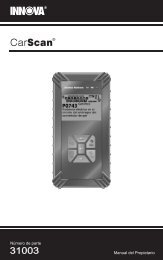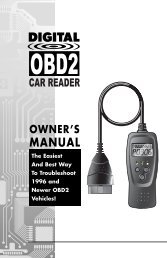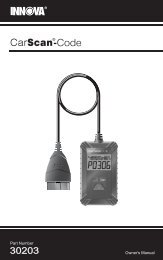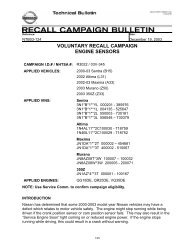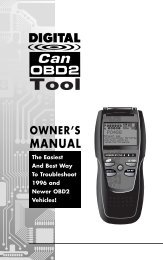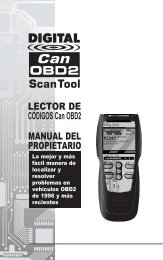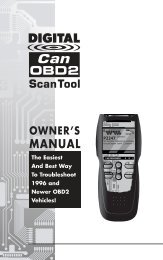31603 - Innova Pro
31603 - Innova Pro
31603 - Innova Pro
Create successful ePaper yourself
Turn your PDF publications into a flip-book with our unique Google optimized e-Paper software.
Onboard DiagnosticsDIAGNOSTIC TROUBLE CODES (DTCs)DTCs and MIL StatusWhen the vehicle’s on-board computer detectsa failure in an emissions-related component orsystem, the computer’s internal diagnosticprogram assigns a diagnostic trouble code(DTC) that points to the system (and subsystem)where the fault was found. The diagnosticprogram saves the code in the computer’smemory. It records a “Freeze Frame” ofconditions present when the fault was found, and lights the MalfunctionIndicator Lamp (MIL). Some faults require detection for two trips in a rowbefore the MIL is turned on.The “Malfunction Indicator Lamp” (MIL) is the accepted termused to describe the lamp on the dashboard that lights to warnthe driver that an emissions-related fault has been found.Some manufacturers may still call this lamp a “Check Engine”or “Service Engine Soon” light.There are two types of DTCs used for emissions-related faults: Type “A”and Type “B.” Type “A” codes are “One-Trip” codes; Type “B” DTCs areusually Two-Trip DTCs.When a Type “A” DTC is found on the First Trip, the following eventstake place:• The computer commands the MIL “On” when the failure is first found.• If the failure causes a severe misfire that may cause damage to thecatalytic converter, the MIL “flashes” once per second. The MILcontinues to flash as long as the condition exists. If the conditionthat caused the MIL to flash is no longer present, the MIL will light“steady” On.• A DTC is saved in the computer’s memory for later retrieval.• A “Freeze Frame” of the conditions present in the engine or emissionssystem when the MIL was ordered “On” is saved in the computer’smemory for later retrieval. This information shows fuel system status(closed loop or open loop), engine load, coolant temperature, fuel trimvalue, MAP vacuum, engine RPM and DTC priority.When a Type “B” DTC is found on the First Trip, the following eventstake place:• The computer sets a Pending DTC, but the MIL is not ordered “On.”“Freeze Frame” data may or may not be saved at this timedepending on manufacturer. The Pending DTC is saved in thecomputer’s memory for later retrieval.• If the failure is found on the second consecutive trip, the MIL isordered “On.” “Freeze Frame” data is saved in the computer’smemory.• If the failure is not found on the second Trip, the Pending DTC iserased from the computer’s memory.The MIL will stay lit for both Type “A” and Type “B” codes until one ofthe following conditions occurs:18 CarScan+ ABS/SRS


